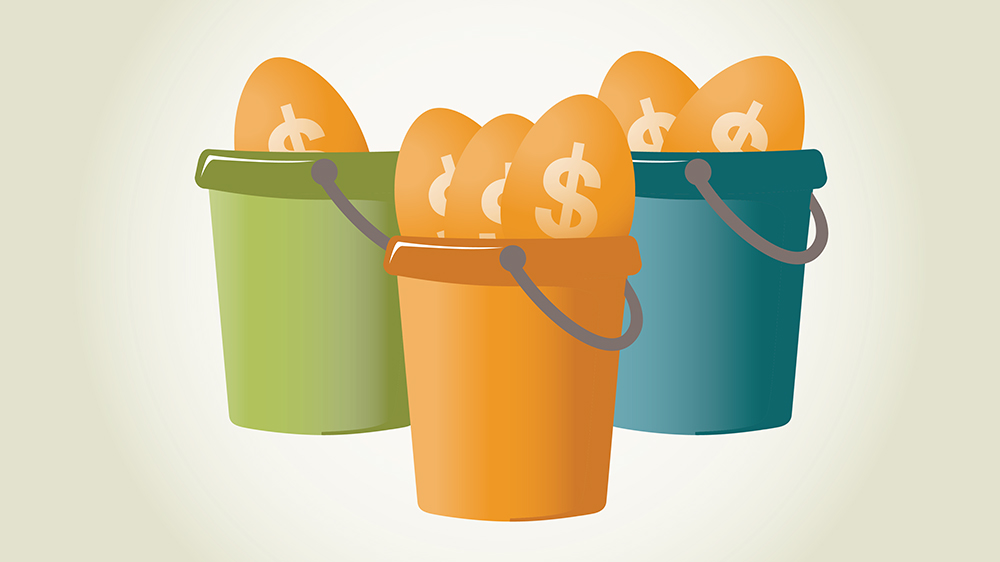
Most people entering retirement naturally would prefer to continue to collect a paycheck, much like when they worked for a living.
That regular income is likely to come from Social Security, a pension if you have one, as well as from money in tax-deferred retirement plans such as your 401(k) and IRA accounts.
The goal is to have steady income but also sufficient growth in order to finance your future spending needs. The good news is that there are ways to create that steady “retirement paycheck” effect.
During your working years your income is spent on essentials and, of course, some non-essentials. However, prudent savers know that money has another job, which is to grow over time into more money for retirement.
One day, retirement is at hand. Your money has grown into an impressive amount, but there it sits. So how do you turn your nest egg into a check upon which you can rely for decades to come?
The solution is to think in terms of buckets. Instead of a single portfolio with a shifting mix of stocks and bonds you now have two or maybe three bucket accounts, each with its own purpose.
Those buckets are:
The Consumption Bucket — Money you will spend soon on housing, food, transportation, and personal needs, typically in cash. Having up to 12 months of spending in cash in a savings account is a powerful way to avoid rash investment decisions with your other buckets.
The Contingency Bucket — Money you will spend more than a year from now. Look for income investments with accessibility to fund your first bucket as needed.
The Goals Bucket — This is money that you won’t expect to need for several years. This money should grow and compound and won’t be touched until necessary. Here, choose conservative growth investments.
Filling the buckets
Each of these three buckets will grow at different speeds, faster or slower according to the risk assumed in each. A steady waterfall effect of moving money keeps the consumption bucket topped off but not at the expense of the growth you need to finance a long and happy retirement.
So how do you get paid? Many Rebalance clients work with an advisor to set up periodic distributions that can be automated as monthly payments to a personal checking account, creating a regular retirement paycheck for themselves.
Each month you get a slug of cash to spend, like a paycheck. The growth of the rest of your investments should keep steadily filling up your spending account.
The goal is regular income without the drama that can affect us in periods when markets are more volatile.





